As the cold days approach, there’s a particular recipe from my travels in Korea that beckons to be revisited. The Korean Chicken and Rice Porridge is not just a dish; it’s an emotion, a tapestry of flavors that speaks of warmth and comfort. Let me guide you on this gastronomic journey, a recipe close to my heart.
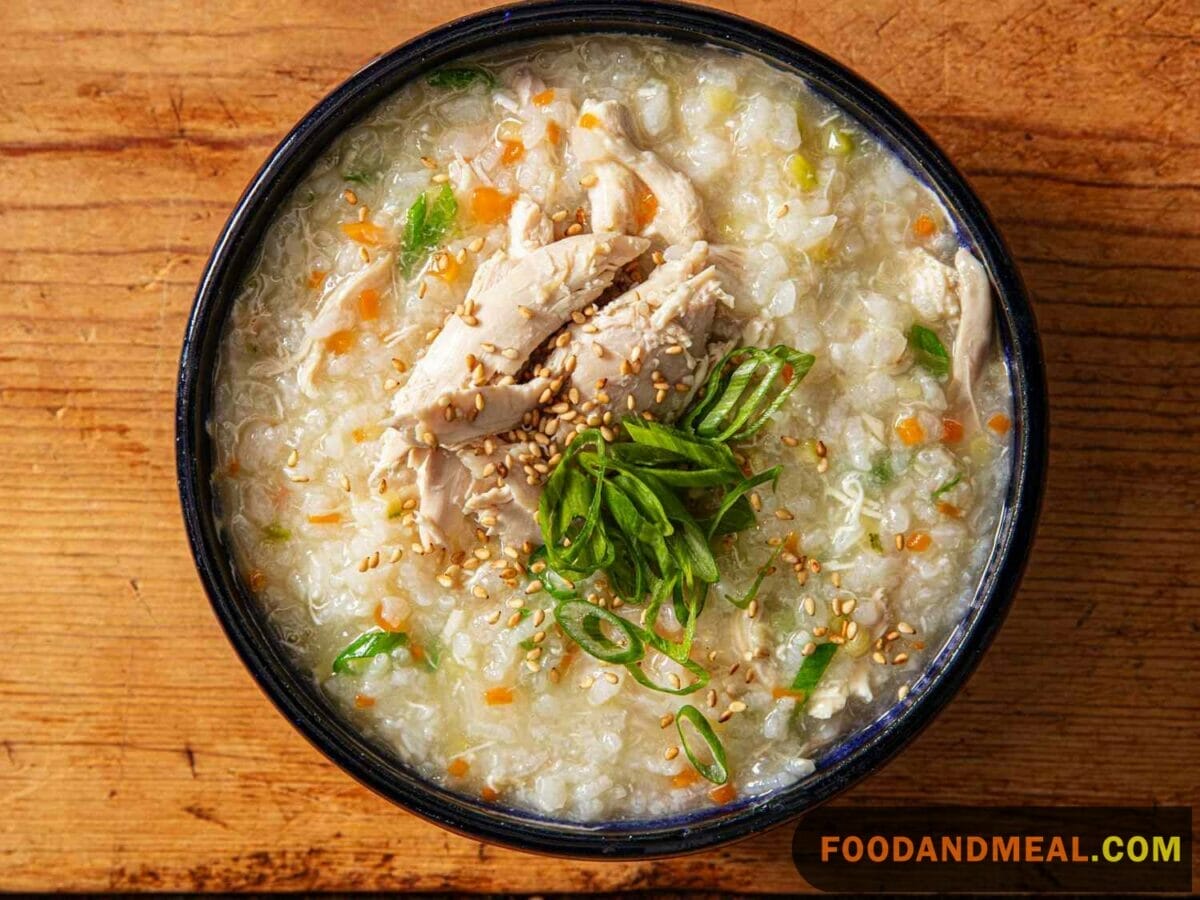
Korean Chicken and Rice Porridge Recipe
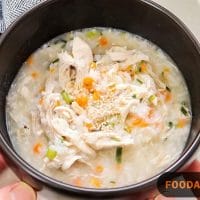
CHICKEN AND RICE PORRIDGE
Ingredients
- 1 cups rice
- 2 tablespoons toasted sesame oil
- 5 cups low-sodium chicken broth
- 1 clove garlic, minced
- 1 cup shredded poached or roasted chicken, for garnish
- 2 scallions, finely chopped, for garnish
- Toasted sesame seeds, for garnish
- Soy sauce, for serving
Instructions
- Rinse the rice and soak for 1 hour. Drain.
- In a stockpot over medium-high heat, stir-fry the rice with the sesame oil for 2 minutes. Add the chicken broth and stir to mix. Raise the heat to high, bring to a boil, and lower the heat to medium and let simmer for 10 minutes.
- Stir in the garlic and continue to cook for another 20 minutes, or until the rice breaks down and the porridge is thick. Stir a few times during cooking.
- Serve garnished with shredded chicken, scallions, and sesame seeds, and offer soy sauce alongside.
Video
Notes
Nutrition
© Food And Meal
This website provides approximate nutrition information for convenience and as a courtesy only. Nutrition data is gathered primarily from the Spoonacular Database, whenever available, or otherwise other online calculators.
Cooking Tips for Korean Chicken and Rice Porridge
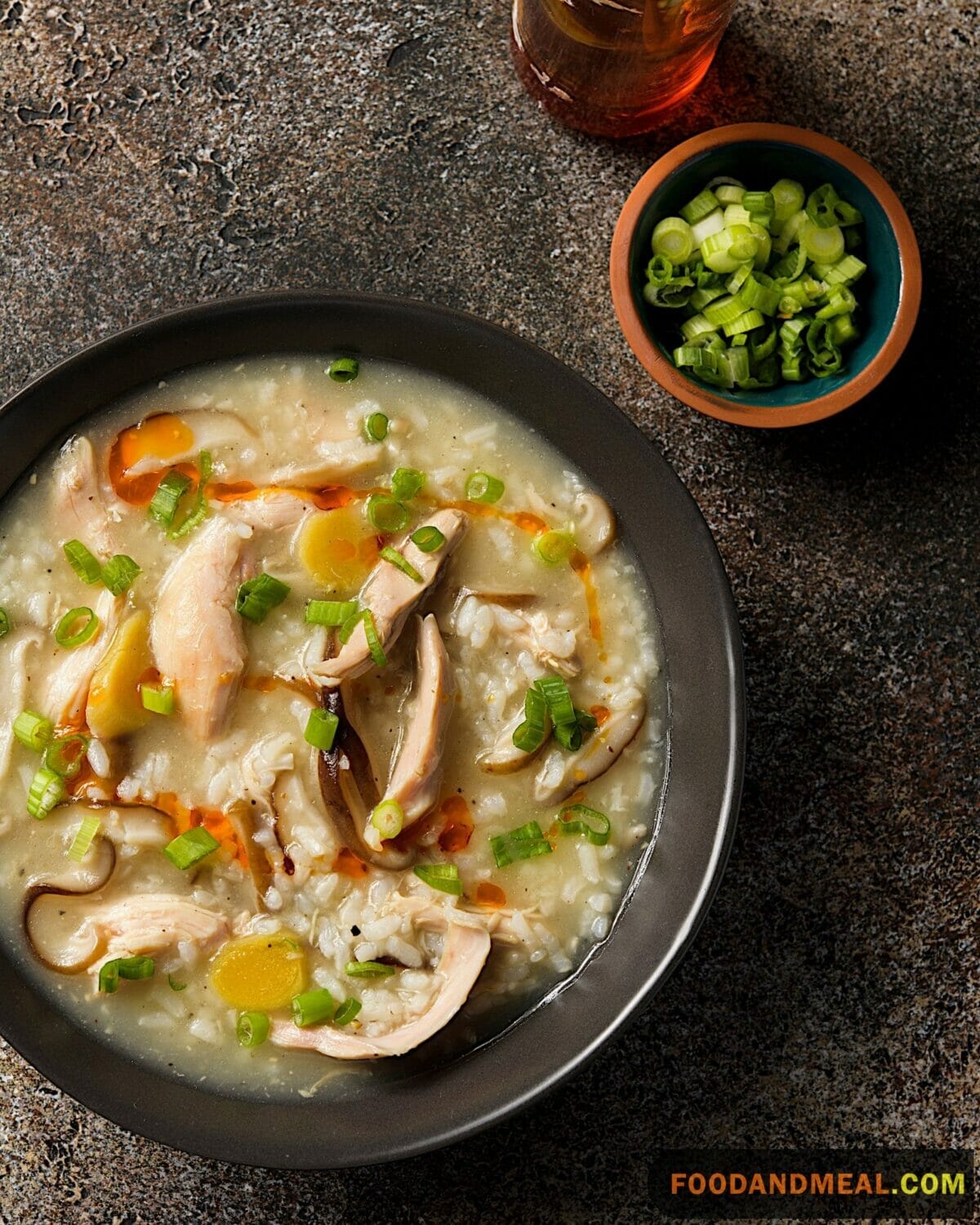
- Rice Rinse Ritual: Begin by rinsing the rice multiple times in cold water until the water runs clear. This helps in removing excess starch which ensures a smoother consistency in the porridge.
- Chicken Choices: Opt for bone-in pieces like drumsticks or thighs. The bones release a richer flavor into the porridge. Remember, the longer the chicken simmers, the more tender it becomes, enhancing the overall texture and taste.
- Consistent Stir: Continuously stir the porridge, especially during the last stages of cooking. This not only prevents sticking at the bottom but also imparts a creamy consistency.
- Seasoning Sequence: Start with a mild seasoning initially. As the porridge thickens, the flavors intensify. It’s always easier to add more seasoning later than to correct an overly salty dish.
- Garnish Gracefully: Traditional garnishes like thinly sliced green onions, minced garlic, or a dash of sesame oil can elevate the dish. However, remember, less is more. The beauty of Dakjuk lies in its simplicity, and the garnishes should complement, not overpower.
- Stock Secrets: While water is the traditional base, a good-quality low-sodium chicken stock can amplify the flavor. If using stock, adjust your seasoning accordingly.
- Keep It Covered: When simmering, keep the pot covered. This helps in retaining moisture and ensuring the porridge doesn’t become too thick too quickly.
Serving Suggestions for Korean Chicken and Rice Porridge
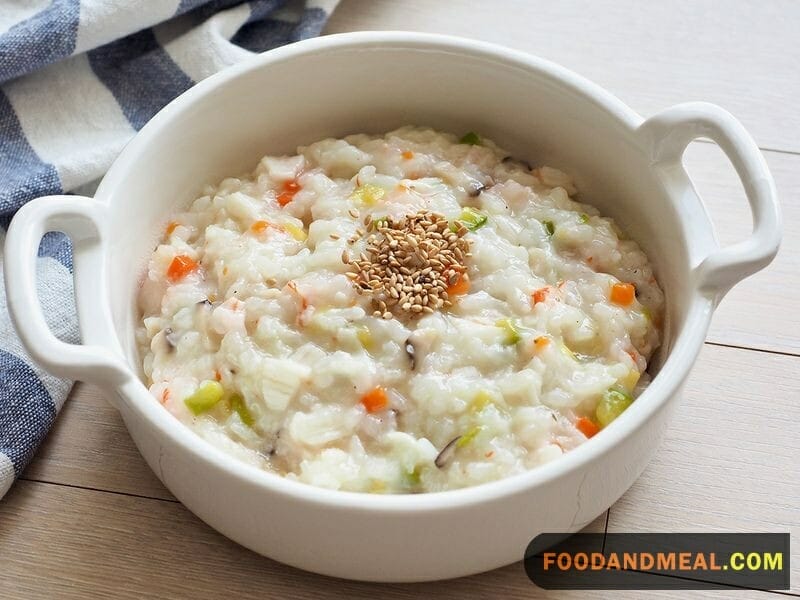
- When & Where: Dakjuk has traditionally been a recovery food – perfect for those who are sick, elderly, or recovering from surgery. But its understated elegance also makes it suitable for a relaxed brunch, a light dinner, or even as a starter for a grand Korean feast.
- Audience Affinity: This dish is perfect for anyone. From toddlers taking their first bites of solid food to grandparents enjoying the familiar comfort of tradition, Dakjuk is a crowd-pleaser. Serving it to guests unfamiliar with Korean cuisine? It’s a gentle introduction to the flavors of Korea.
- Complementary Sides:
- Kimchi: The spiciness and tang of kimchi can be a refreshing contrast to the mild flavors of Dakjuk.
- Seasoned Seaweed (Gim): This crunchy delight can add texture and a deep sea flavor, creating a beautiful balance.
- Pickled Radish: Its crunch and acidity can offset the softness of the porridge, adding a new dimension to each bite.
- Garnishing the Gold: A drizzle of sesame oil, a sprinkle of sesame seeds, thinly sliced green onions, or even a few julienned carrots can add color, texture, and flavor. For an extra flair, add a dollop of gochujang (Korean red chili paste) on the side for those who want a spicy kick.
- Beverage Pairings:
- Barley Tea (Boricha): Its nutty flavor pairs wonderfully, creating a comforting combo.
- Soju: For adults, a glass of soju can be a smooth companion to the porridge, especially for dinner.
- Ginger Tea: The warmth of ginger tea complements the comforting nature of Dakjuk, especially on cold days.
FAQs about Korean Chicken and Rice Porridge
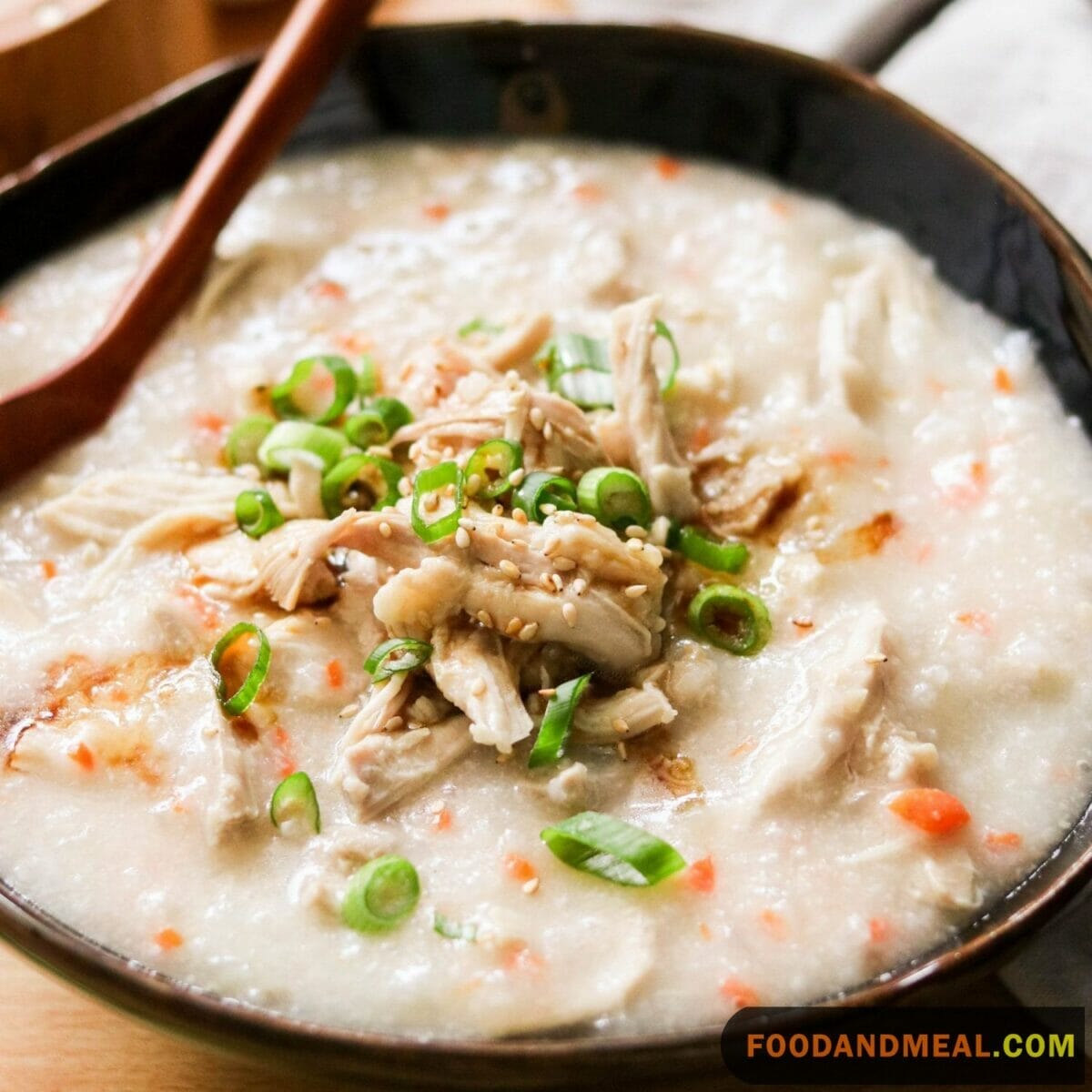
- Can I use brown rice instead of white rice? Absolutely! Brown rice offers a nuttier flavor and a slightly chewier texture. Just adjust the cooking time as brown rice tends to take longer to cook.
- Is it essential to use Korean-specific ingredients? For an authentic taste, yes. However, in the absence of Korean ingredients, you can use local alternatives, though the flavor profile may slightly vary.
- How do I get that silky-smooth consistency? The key is the rice-to-liquid ratio and consistent stirring. If your porridge turns out too thick, you can always add more broth to achieve the desired consistency.
- What protein alternatives can I use instead of chicken? You can opt for turkey, duck, or even tofu for a vegetarian spin. The fundamental method remains the same; just adjust the cooking time according to the protein.
- How to store leftovers and for how long? Store any leftovers in an airtight container in the refrigerator. The porridge should be consumed within 2 days. When reheating, add a little broth or water to regain its creamy consistency.
Embark on a Korean flavor journey with Chicken and Rice Porridge. Share the warmth, and for more delicacies, hit subscribe!
Hi! I'm Nazia of ‘Nazia Cooks’, a self-taught baker and cook residing in Chennai. Rooted in the rich South Indian culinary landscape, my palate has expanded to embrace global flavors. I revel in crafting fusion dishes, melding traditions to birth unique tastes.



